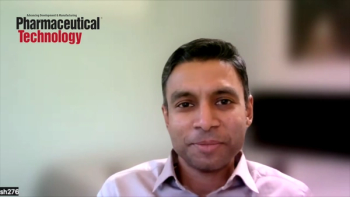
- BioPharm International, October 2024
- Volume 37
- Issue 9
Key Takeaways from the Peer Exchange Discussion “Aligning mRNA Progress with Regulatory Streamlining”
There is potential to effectively marry the best aspects of mRNA as a modality, to other existing or nascent exciting platforms, such as gene editing.
mRNA vaccines and therapies can be developed faster than other drug development approaches. Once a target sequence is known mRNA can be synthesized and tested immediately. This reconfigurability and speed is a benefit made manifestly obvious by the warp speed approach, successfully taken during the covid19 pandemic. But that is just one leaf in the laurel crown. Reduced risk for genomic integration in general, (perhaps in contrast to the viral vectors used in gene therapy) is another weighty advantage, because mRNA does not integrate into the genome - thus greatly minimizing potential long-term risk. Above all this, however, is a key finding coming out BioPharm International’s recent Peer Exchange discussion, which is the potential to effectively marry the best aspects of mRNA as a modality, to other existing or nascent exciting platforms, such as gene editing.
Further to this, regulatory streamlining aligning with technological advances jibes well with new FDA thinking and structures around the concept of a “platform approval process”. The FDA Omnibus Reform Act of 2022 (“FDORA”) and the Prepare for and Respond to Existing Viruses, Emerging New Threats, and Pandemics Act (the “PREVENT Pandemics Act”) allow FDA leeway to explore and designate platform technologies. Our conversation examined the merits of doing so specifically for mRNA vaccines and, potentially, therapeutics. This is also hand-in-glove with the spirit and intention of certain provisions within the CURES act, and a desire to both accelerate approvals generally, while also reducing drug shortages dramatically. We have written about the somewhat surprising long-term government direct financial support for mRNAthrough the Biomedical Advanced Research Development Authority (1)
The headline takeaway is Dr Marks announced FDA is about to name the projects to be included in the new “start pilot” . His outline of the new communication program begins with stating “It’s basically looking to try to apply the principles of operation warp speed to our rare disease therapeutic development. The goal is to look at various metrics while we give programs the same kind of interactive meeting, instead of [or in addition to] having formal meetings, there’ll be informal interactions on an ad hoc basis, obviously with the appropriate formal minutes, etc, but, but bottom line is, the idea is not to have development slowed down by the need to wait for meetings to take place, and to try to also cut down some of the back and forth that sometimes happens, especially in the CMC space, where we go multiple rounds to get to resolution. So hopefully the metrics that we’ll get back on this will say, hey, it’s a success, and we’ll be able to hire up enough people to be able to put this routinely in place for rare disease product development. Having been up close and personal with Operation warp speed for the vaccines, I think it made a huge difference. It was actually more rewarding on the regulatory side, and I think it was less frustrating on the industry side. So I think it could be a real win-win.. [For example] If we have this question about how many conformance lots do we need to produce before we can go live, instead of having a formal meeting, there’ll be an informal discussion. Sometimes it could be a reply in writing. Sometimes it’ll be an informal teleconference. Sometimes maybe a more formal meeting might be set up a week later, but it’s not going to be, oh, send in a briefing book, and we’ll have a meeting 75 days from now, so that that’s, that’s the that’s the real difference here. The idea is to try to cut this kind of wasted space in development down, which, in aggregate, I think probably it’s got to add anywhere upwards of 25% to development time for some of the small programs that we’ve seen. We did a little net present value calculation about how much industry could pay if we had to put this into practice, and it turns out that it’s like it’s a pittance, what it will cost in terms of the additional headcount compared to the potential upside.
Further into the discussion, one of the key aspects Dr. Chien considers possibly under-appreciated in the ATMP field, is that he considers mRNA “very dossable”, saying “you can get a quantitative increase in protein expression, and of course, then a quantitative readout of clinical efficacy. And I think that’s going to be important for safety versus other genomic therapeutics, where it’s not dosable, you can’t repeat it. I think, which we’re starting to see a lot of excitement adjacent to theadvent of one and done genomic medicines. CRISPR mediated gene editing and base editing. I think mRNA is perfectly suited for this type of one and done approach, where you want to have it have its activity, and then you want it to shut down. And so this is where the transient expression actually becomes an advantage rather than a disadvantage”.
Dr Marks took up and modified this train of thought by saying mRNA was perhaps an opportunity to “move from we’re a place where we’ve often been relying on mammalian cell lines to being able to move to something that is much more synthetic, that can potentially be miniaturized. Maybe this is several years off, but you can actually imagine that we could miniaturize this process efficiently to help have sustainable manufacturing in many countries which otherwise would not be able to do so…I know some of our efforts have been in the space of trying to move this to essentially automate and miniaturize manufacturing. This this could be very important as we head for the next unknown infectious disease that’s coming down the line, or for other techniques as well”.
In marrying up the platform concept with other techniques Dr. Chien asked the group for opinions and perspectives on applying mRNA to the rare diseases field. Dr Marks thought it a useful thought experiment to juxtapose rare diseases with , say, large disease burdens states such as hypercholesterolemia, responding that “I think we would figure out a way to meet our effectiveness standard while maximally streamlining. There are ways to do that, because I think you could probably essentially bin certain products together, single nucleotide repair, for instance, within a coding sequence for a given gene or a given class of genes. You would do the right analyzes to make sure that you’re not off target, having off target problems, and then, just focus on the fact that, if you can see those products working safely, won’t have to go through each one, one at a time, and slog through. I think this could be a really exciting place where, as a regulator, it actually gets me excited to come to work, because it’s actually applying a very scientific and potentially thoughtful approach to this, to bring products to the maximum number of people in need. And if you look at some of these rare diseases that are, some pretty terrible diseases that that, I think you already said it,… I think there’s potentially a lot to gain” , he concluded.
The next thread to be picked up and examined was how mRNA might help transition the broader scientific community into the work of synthetic biology. Dr Atouf pointed out that “especially for those in the translational research side synthetic biology is on everyone’s mind, and this is a very good example actually to leverage and use, to talk about how you can bring something from early development all the way to therapeutic or a vaccine. But I think to me, the message to the scientific healthcare community is about how we can foster collaboration and innovation, and how we can create efficiency in drug development? We can promote the concept of public-private-partnership and collaboration among scientists, clinician, graduates, professionals, industry expert.. We’ve seen actually working very well, and also extracting lessons from the rapid development and approval to mRNA vaccines and identify best practices”. He continues on a general point “There’s so much actually to learn from there best practices, regulatory strategies and other innovative approaches that can be applied to accelerate and streamline the development of mRNA based therapies.”
Switching perspectives to go beyond the familiar,Dr Chien then goes on to consider less talked about applications of mRNA technology.“Moving the technology to not only towards the clinical development, but even early stage target evaluation and validation, I think there’s a lot of opportunity. You can make libraries of mRNAs and then see which one actually has an effect, - in analogy with what has been done with expression cloning using DNA vectors. Well, there’s no reason you can’t do it with mRNA, but then you get an in vivo read out, which is even better. So that’s one of the suggestions I have for the development scientist type for physicians. What I’m very excited about is AAVexpression or genomic technology not only to include loss of function, where you take out a gene, but actually where you can insert, and in certain cases, large segments, entire transcriptional units in a site dependent manner, in a specific locus and in a safe harbor. A recent group at UC Berkeley, led by Kathleen Collins, (published in natured biotechnology) hasn’t really received the levelattention it deserves, they used an entirely mRNA based approach, which did not require guide RNAs. It’s based on retrotransposon technology, and we insert an entire GFP transcriptional unit into a safe harbor in mammalian cells with high efficiency, with just two mRNAs and I, this is early days (but I’ve been around long enough to know that once you get a signal like that, you get a lot of smart people working on it), If we can turn the mRNA technology around to be not only one and done for loss of function, but for gain of function, it’s Katie bar the doors. This is going to be disruptive! I don’t think anything’s going to beat it, as long as it can be safe, one and done, control site of integration does dependent. These are the key principles, and I think you’re going to see it the next five years.”
Our panelists were in agreement about how best to help move the field forward, each pointing to standardization of manufacture, with Dr. Chien pointing out that while many approaches were initially used, the center of gravity now falls universally on the clean cap technology choice. All panelists dialed in the need to have improved delivery mechanisms and efficiencies with precise targeting of mRNA molecules to specific cell type of tissues, and delivery systems[giving a shoutout to the work of Dr. Peter Cullis and others]that enable the stability and bioavailability of mRNA which could improve their pharmacokinetics and pharmacodynamics, leading to more sustained and improved therapeutic effect. Dr. Blume received wide agreement on her comment that from a “patient and healthcare professional perspective, I would say we need to overcome shelf life or storage conditions. So because, of course, at the moment, we are at lower temperatures, and if we can make this improvement [perhaps through lyophilization] to be at room temperature, it would help a lot for the use of mRNA products in the field.”
References
1. Spivey, C. Washington, DC Houses mRNA Leadership. Pharmaceutical Technology 47 (10) 2023 10.
Moderator
Chris Spivey, Director of Industrial Relations & Strategic Partnerships, MJH Life Sciences
Panelists
Fouad Atouf PhD, Senior VP, Global Biologics, United States Pharmacopeia
Constanze Constanze Blume PhD, Senior VP Regulatory Affairs for Biologics in Development, BioNTech
Kenneth Chien, MD PhD, Co-Founder at Moderna, Director at Karolinska Institutet
Peter Marks MD PhD, Director of CBER, FDA
Articles in this issue
about 1 year ago
Understanding Molecule Sensitivity in Aseptic Fill/Finishabout 1 year ago
The Optimal Metric of Space-Time Yieldabout 1 year ago
Glycosylation Analysis for Multispecificsabout 1 year ago
Contractors Support Material Testingabout 1 year ago
Drug Prices on Debateabout 1 year ago
Using Compendial-Grade Materials for 503B Compounding FacilitiesNewsletter
Stay at the forefront of biopharmaceutical innovation—subscribe to BioPharm International for expert insights on drug development, manufacturing, compliance, and more.





